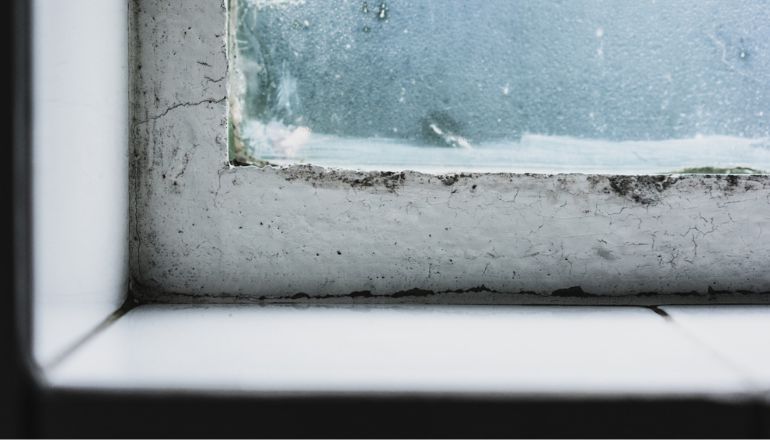Mold in Condo: What You Need to Know

If you live in a condo, you might be facing a hidden threat without even realizing it: Mold in condo. Mold isn’t just an eyesore. It can gradually affect your health and damage the structure of your home. From musty smells to dark stains on walls, there are warning signs you shouldn’t ignore.
In this blog post, we’ll walk you through everything you need to know about the causes, signs, risks, and solutions for mold in condos, so you can protect your living space before it becomes a bigger problem.
What Causes Mold in a Condo?
Mold in condo typically forms when excess moisture meets poor ventilation. Here are the most common causes:
- Leaky plumbing: Dripping pipes inside walls or under sinks can create damp areas where mold thrives.
- Roof or window leaks: Even a small leak from above or around windows can introduce moisture that lingers and leads to mold growth.
- High indoor humidity: Condos without proper ventilation, especially in bathrooms and kitchens, can trap humidity and encourage mold.
- Condensation: Poor insulation or cold surfaces can cause water to condense indoors, particularly on windows, walls, or air conditioning ducts.
- Flooding or water damage: Past flooding incidents, if not properly dried and repaired, can leave hidden moisture behind walls or under flooring.
- Poorly maintained HVAC systems: Dusty or clogged systems can distribute mold spores and fail to control humidity effectively.
- Improperly vented appliances: Clothes dryers, stovetops, or bathroom fans that vent indoors instead of outside can increase indoor moisture levels.
Is Mold in a Condo Dangerous?
Yes, mold in a condo can be dangerous to both your health and property. Health-wise, mold can trigger allergic reactions like sneezing, coughing, skin irritation, and watery eyes. In more severe cases, especially with black mold (Stachybotrys chartarum), it can cause respiratory problems, asthma flare-ups, and long-term lung issues, particularly in children, the elderly, or individuals with weakened immune systems.
Mold also poses a threat to your condo’s structure. It can weaken materials such as drywall, wood, and insulation when it spreads behind walls, under floors, or into ceilings, leading to costly repairs. Additionally, mold can degrade indoor air quality by releasing spores throughout your condo, which is often spread by HVAC systems, making the air feel damp or musty.
Finally, mold can significantly lower the resale value of your condo and complicate real estate transactions, especially if it is discovered during an inspection. Prompt mold removal is essential to mitigate these risks and protect both your health and property.
Signs You Might Have Mold in Your Condo
There are several telltale signs that mold might be growing in your condo. If you notice any of these, it’s important to take action right away.
- Musty smell: A persistent musty odor is often the first sign of mold. If you smell something damp or earthy, it could mean mold is hidden behind walls, under flooring, or in other areas you can’t see.
- Visible mold growth: Mold can appear as black, green, or white spots on walls, ceilings, or floors. If you see discoloration or fuzzy patches, it’s a strong indication that mold is present.
- Water damage: Areas that have experienced water damage, like water stains, peeling paint, or warped wood, are prime spots for mold growth. Check around windows, pipes, and appliances where water may have seeped in.
- Increased allergy symptoms: If you notice more sneezing, coughing, itchy eyes, or skin rashes while at home, mold exposure might be the cause. These symptoms can get worse the longer you’re in contact with mold spores.
- Condensation and dampness: Excess moisture on windows, walls, or ceilings can indicate an environment where mold thrives. If you notice persistent dampness, especially in rooms like bathrooms or kitchens, it’s worth checking for mold.
How to Get Rid of Mold in a Condo
Getting rid of mold in your condo requires a systematic approach. While minor mold issues can often be tackled with DIY methods, larger infestations, especially black mold in condo, require professional attention. Here’s how to handle it:
- Identify and address the source of moisture: Mold thrives in damp environments. Fix any leaks in plumbing, roofs, or windows, and ensure proper ventilation in areas like bathrooms and kitchens.
- Clean small mold patches: For minor mold issues, use a mixture of water and detergent to scrub affected areas. You can also use mold-killing solutions like vinegar or hydrogen peroxide. Be sure to wear protective gloves and a mask while cleaning.
- Replace damaged materials: If mold has penetrated porous materials like drywall or insulation, it may be necessary to replace them. Mold can be difficult to remove from these surfaces, and simply cleaning them may not fully solve the problem.
- Use dehumidifiers: To prevent mold from returning, reduce indoor humidity by using dehumidifiers, especially in damp areas.
When to Hire a Professional Mold Remediation Service
Hiring a professional mold remediation service is often necessary when mold growth is extensive, or if you suspect you have mold in your condo. A mold can produce mycotoxins, which are harmful to your health, and it requires specialized removal techniques. Professionals can accurately assess the extent of the mold, safely remove it, and prevent it from spreading to other areas of your condo. If the mold covers a large area (more than 10 square feet), it’s highly recommended to call in experts to handle the removal.
A professional will also conduct a thorough inspection to ensure all moisture sources are eliminated and provide advice on how to prevent future mold growth.
How to Prevent Mold Growth in Condos
Preventing mold in a condo starts with controlling moisture and maintaining proper ventilation. Here are some effective ways to keep mold from becoming a problem:
- Fix leaks immediately: Whether it’s a dripping pipe, a leaky faucet, or water seeping in around windows, address any water intrusion as soon as possible to prevent moisture buildup.
- Use exhaust fans: Make sure to run exhaust fans in bathrooms and kitchens when cooking, showering, or using appliances that produce steam. Proper airflow helps keep humidity levels down.
- Keep indoor humidity low: Aim to maintain indoor humidity between 30% and 50%. You can use a dehumidifier in rooms that tend to get damp, such as basements or bathrooms.
- Improve air circulation: Use ceiling fans or open windows occasionally to promote fresh air flow, especially in tightly sealed condos where air tends to stagnate.
- Insulate windows and walls: Proper insulation helps reduce condensation on surfaces during colder months, lowering the risk of mold forming in hidden areas.
- Regularly inspect problem areas: Pay attention to places prone to moisture, such as under sinks, around windows, or near HVAC units. Catching problems early is key to avoiding larger mold issues.
By staying proactive with these steps, you can significantly reduce the chances of mold growth and maintain a healthier living environment in your condo.
Who’s Responsible for Mold in a Condo?
Responsibility for mold in condo depends on where the mold is located and what caused it. In most cases, both the condo unit owner and the condo corporation (or homeowners’ association) may share responsibilities.
If the mold is found inside your unit (on walls, ceilings, or areas that fall under your personal use) you, as the unit owner, are typically responsible for cleanup and repairs. This includes mold caused by things like poor ventilation, leaks from personal appliances, or neglecting to report a problem early.
However, if the mold originates from common elements, such as building plumbing, roof leaks, exterior walls, or shared HVAC systems, then the condo corporation may be responsible for resolving the issue and covering the cost of repairs. In these cases, it’s essential to report the problem to your property manager promptly and document everything.
Responsibility can also depend on what’s written in your condo’s declaration and bylaws, so reviewing those documents is important. In some cases, owners may need to prove that the mold wasn’t caused by their own negligence to shift responsibility to the corporation.
For peace of mind, it’s also worth reviewing your condo insurance policy. Not all policies cover mold-related damage, especially in pre-construction units or new builds. If you’re investing in a new condo in the Greater Toronto Area, understanding your coverage is key.
Learn more about insurance for pre-construction condos in the GTA; what it includes, what it doesn’t, and why it matters for future mold or water-related claims.
Conclusion: Act Fast to Protect Your Health and Property
Mold isn’t something to ignore in a condo; it can lead to serious health problems, structural damage, and costly repairs. The key is to act quickly: identify the source, clean it properly, and take steps to prevent it from coming back. Whether you handle it yourself or call in a professional, early action can save you time, money, and stress down the line.













